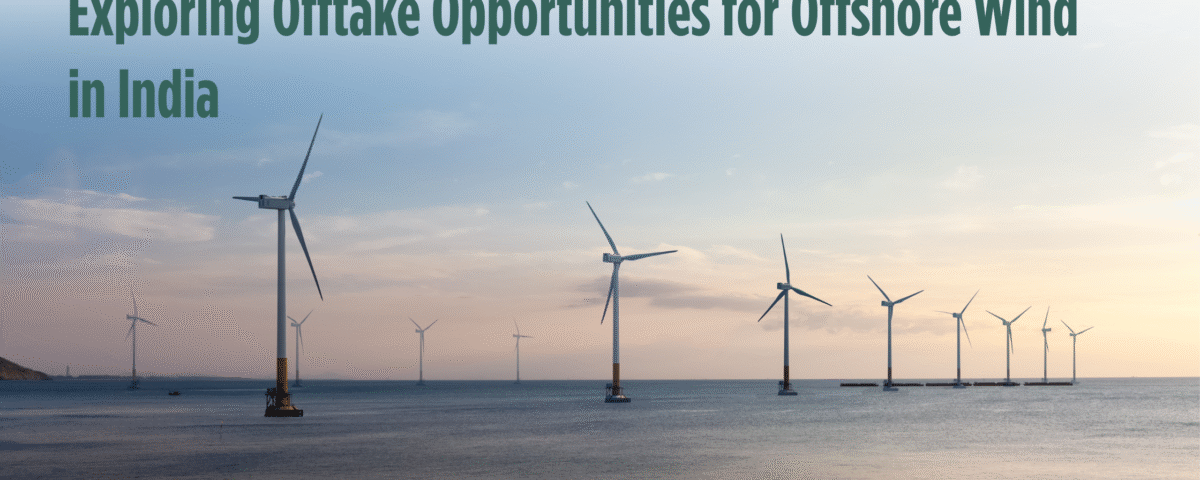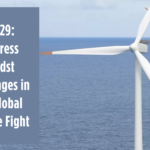
COP29: Progress Amidst Challenges in the Global Climate Fight
December 20, 2024On 29th July 2025, ClimateHub India Advisors released the report “Exploring Offtake Opportunities for Offshore Wind in India”. The report, prepared by ClimateHub India Advisors with the knowledge input from Shakti Sustainable Energy Foundation, brings together more than a year of research and analysis. The report discusses pathways for accelerating offshore wind deployment in India, with a focus on viable offtake models, pathways, market integration, and strategic importance of offshore wind.
The report was released by Shri Shripad Yesso Naik, Hon’ble Union Minister of State (MoS) for Ministry of Power (MoP) and Ministry of New & Renewable Energy (MNRE).
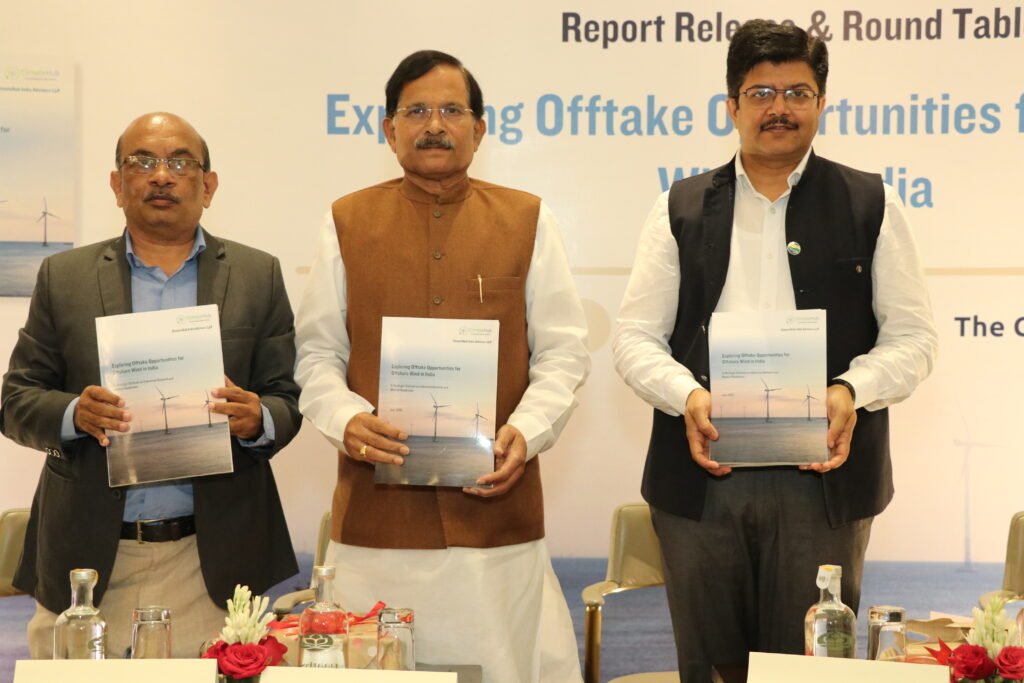
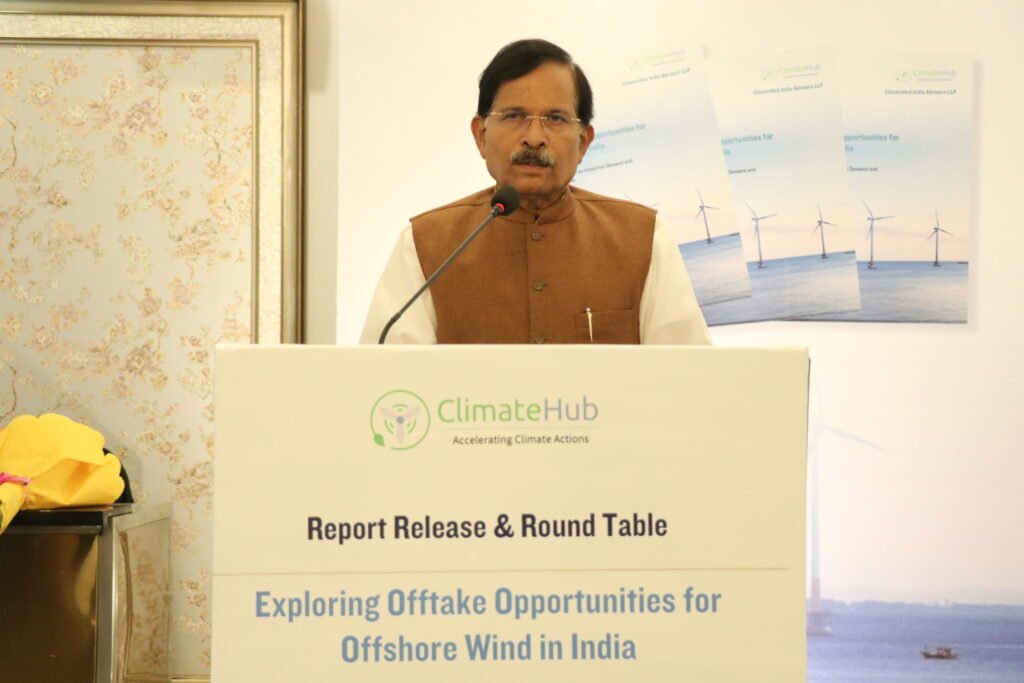
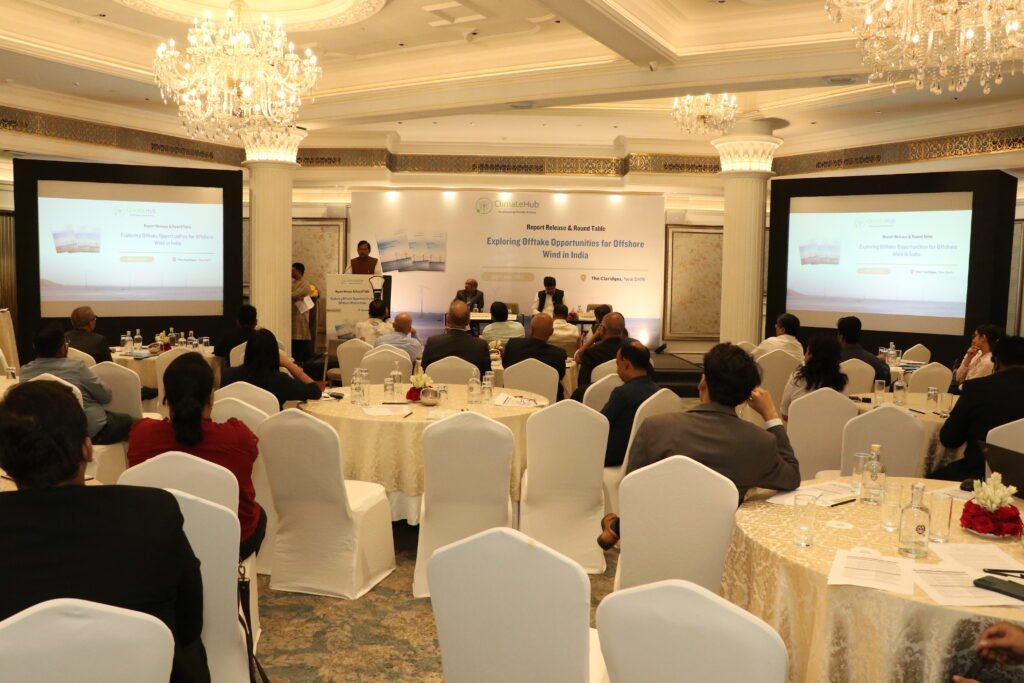
Ministerial Address
The Hon’ble Minister congratulated CHIA team and SSEF for delivering a timely, well-researched report, and reaffirmed the Government’s commitment to offshore wind as a key pillar in achieving India’s clean energy targets and Net Zero by 2070. He highlighted ongoing policy actions, including the notification of bidding guidelines, launch of VGF-supported and lease-based tenders, and streamlining of permitting processes. He urged industry stakeholders to respond with confidence and called for strong multi-stakeholder collaboration to position India as a global hub for offshore wind development.
Key Remarks and Discussion on the Report
Stakeholders broadly endorsed the report’s relevance and analytical strength. SECI highlighted weak market response to recent tenders due to tariff and revenue uncertainties and recommended integrating supply chain planning and CfDs to boost project bankability. ONGC Green emphasized PSU readiness and evaluated the proposed procurement models, suggesting solar-like incentives and PSU-led pilot projects. SSEF underscored offshore wind’s value beyond cost, particularly for grid reliability and industrial demand.
In open discussions, participants flagged the need to address hourly demand gaps, improve grid flexibility, and plan for the phase-out of ISTS waivers. They stressed the importance of clear long-term price signals, lessons from global markets, and early policy cues—such as benchmark tariffs and site-specific turbine design—to enhance investor confidence.
Report Structure
The report “Unlocking Offtake Opportunities for Offshore Wind in India” is grounded in rigorous, multi-dimensional analysis. It brings together global best practices, detailed techno-economic assessments, and demand-side evaluations to build a credible roadmap for offshore wind offtake in India.
Key analytical components include:
- National Policy Review and Gap Assessment: The report assesses India’s existing offshore wind policy framework, identifying key challenges such as the absence of a long-term procurement mechanism, limited demand aggregation strategies, and the need for streamlined permitting and infrastructure development.
- International Policy Review and Lessons: Case studies from the UK, Germany, Denmark, the Netherlands and China illustrate how other countries transitioned from government-backed models to competitive and merchant offtake arrangements. These insights inform a phased strategy tailored to India’s policy evolution.
- Wind Resource Assessment and Generation Profiling: Detailed wind resource and energy generation modelling was conducted for two 2 GW project scenarios—one each in Gujarat and Tamil Nadu. Using Vortex wind data and multiple turbine layouts, the study estimates capacity factors, seasonal performance, and diurnal generation patterns, highlighting OSW’s ability to supply power during evening peak hours.
- State-Level Demand and Load Pattern Analysis: State-wise electricity consumption trends for Gujarat, Maharashtra, Tamil Nadu, Karnataka, Telangana and Uttar Pradesh were analyzed to identify potential early OSW off-takers. The report also examines hourly demand curves and matches them with OSW generation windows to assess load-following potential.
- Short-Term Market and Power Trading Potential: The report explores near-term offtake pathways through power exchanges, day-ahead and real-time markets, and green term-ahead contracts. It quantifies the scope for integrating OSW into these platforms and evaluates their impact on market prices and system flexibility.
- Industrial Demand from Hard-to-Abate Sectors: A sectoral analysis covering iron and steel, aluminium, mineral oil and petroleum, textiles, cement, and chemicals reveals that a modest 10–15% OSW procurement target in these sectors could translate into 5–12.5 GW of demand by 2037, driven by corporate decarbonization and green procurement mandates.
- Emerging Demand from Green Hydrogen and Data Centers: With green hydrogen projected to require 670 BU of electricity annually by 2037, OSW is positioned as a key enabler of India’s hydrogen economy. In parallel, the rapid growth of data centers—especially in coastal regions—adds another layer of location-aligned, high-quality demand for OSW power.
- Strategic Integration of OSW in India’s Power Sector: The report presents OSW as a dispatchable, high-capacity factor renewable source that complements solar energy and enhances grid stability. It underscores OSW’s potential to support India’s 500 GW non-fossil target by 2030 and contribute meaningfully to long-term net-zero ambitions.
Report Recommendations
The report outlines a set of targeted policy, regulatory, financial, and institutional measures to accelerate offshore wind deployment and ensure long-term market growth in India.
- Phased Offshore Wind Offtake Strategy: Implement a two-phase approach—Phase 1 (5 GW by 2032) combining VGF-supported (Model A) and tariff-based competitive bidding (Models B/C) in Gujarat, Tamil Nadu, Maharashtra, and Uttar Pradesh, with 1.5 GW from industrial consumers via captive/open access; Phase 2 (15 GW by 2037) expanding to include Karnataka and Telangana, with 10 GW from state utilities and 5 GW from industrial users. Align OSW deployment with green hydrogen demand, targeting 10% of the estimated 670 BU electricity requirement for 13.4 MTPA GH₂ in 2037—equivalent to ~17 GW OSW capacity at 45% CUF—to provide a high-CUF, stable renewable supply for industrial decarbonisation.
- Industrial Cluster Integration Strategy: The report recommends identifying and prioritizing high-demand industrial clusters—such as those involved in steel, cement, aluminium, petrochemicals, chemicals, textiles, and data centers—based on their energy needs and proximity to offshore wind (OSW) zones. Key target regions include coastal areas in Gujarat, Maharashtra, Tamil Nadu, Andhra Pradesh–Odisha, Karnataka–Telangana, and Central India. The strategy calls for developing a national industrial demand map, aggregating demand through industry bodies or state agencies, and offering state-level incentives to enable large-scale, cost-effective OSW procurement.
- Institutional Coordination and State Support: Establish a National Offshore Wind Coordination Task Force under MNRE; enhance the role of state nodal agencies in facilitating project approvals, land acquisition, and port access; provide state-level incentives, grid upgrades, and expedited clearances to complement central measures.
- Extend Central VGF Support: Expand viability gap funding coverage from the initial 1 GW to 5 GW of early offshore wind capacity to offset high capital costs, de-risk early investments, and build market confidence.
- Undertake Preliminary Site Investigations: Implement government-led, bankable geotechnical, geophysical, met-ocean, grid integration, and SEA studies for at least 10 GW of priority OSW zones to reduce development risk, improve bid quality, and enable timely project execution.
- Introduce Regional Incentives: Encourage key coastal states such as Gujarat and Tamil Nadu to provide complementary incentives—fiscal benefits, local manufacturing support, grid infrastructure upgrades, and streamlined permitting—to supplement central VGF and attract a broader developer base.
- Introduce Offshore Wind Renewable Purchase Obligation (ORPO): Establish a dedicated ORPO trajectory for priority states (Odisha, Chhattisgarh, Gujarat, Tamil Nadu, Maharashtra, Uttar Pradesh), with provisions for interstate compliance via ISTS-connected OSW, and enable RPO banking, trading, and market-based compliance mechanisms. A modest ORPO starting at 0.25–0.45% in 2032, increasing annually, could drive 6.6–12 BU demand by 2032 (1.7–3.0 GW) and 256–461 BU (65–117 GW) by 2047 at 45% CUF.
- Enable Carbon Credit and Green Certificate Monetisation: Integrate OSW projects into India’s carbon credit and Renewable Energy Certificate (REC) frameworks, enabling generation and trading of environmental attributes. Allow participation in ancillary services and grid balancing markets to provide system flexibility and create additional revenue streams, enhancing project viability and supporting national clean energy and decarbonisation objectives.
- Offshore Wind as a Strategic Enabler for Green Hydrogen (GH₂) and Green Ammonia (GA): The report highlights offshore wind (OSW) as a key enabler for green hydrogen (GH₂) and green ammonia (GA) production due to its high capacity factor, coastal proximity, and access to seawater. It recommends integrating OSW with onshore renewables to ensure round-the-clock power for electrolysis, thereby reducing costs. Coastal states like Gujarat, Maharashtra, Odisha, and Tamil Nadu are identified as priority hubs. The strategy includes offshore electrolysis and desalination to overcome land and water constraints, and promotes GA for its lower transport costs and export potential—leveraging India’s port infrastructure and rising international demand.
Offshore wind offers a strategic opportunity for India to diversify its renewable energy mix, support growing industrial demand, and enhance long-term energy security. Its high-capacity factor, alignment with evening demand, and compatibility with emerging sectors like green hydrogen make it a valuable addition to the national power portfolio. This report outlines a clear, actionable roadmap—grounded in policy, technical, and market analysis—to guide the development of offshore wind. With coordinated action across government, industry, and finance, offshore wind can become a cornerstone of India’s clean energy transition and contribute meaningfully to its economic and climate objectives.
Download the full report here: Click here to download report

